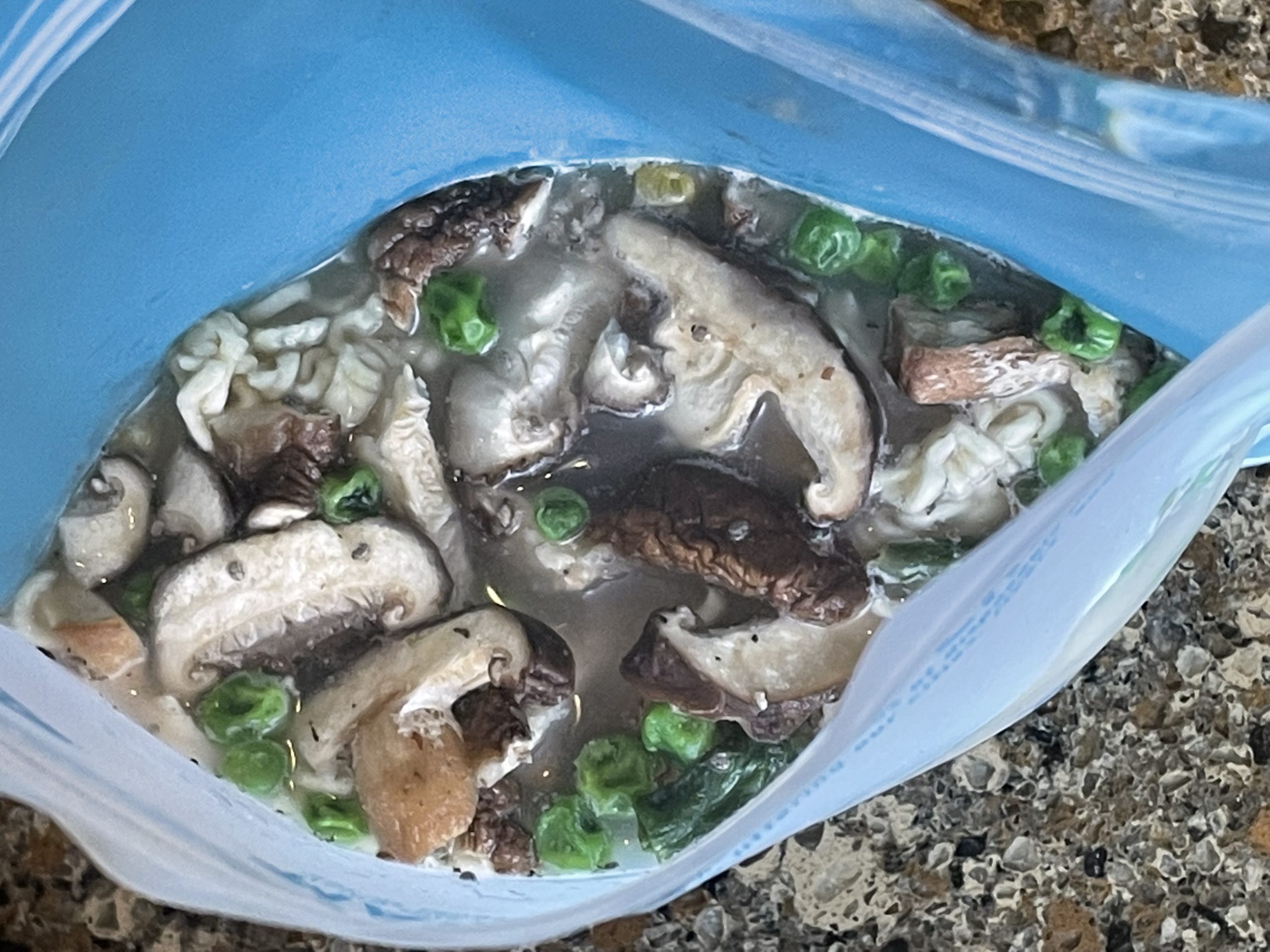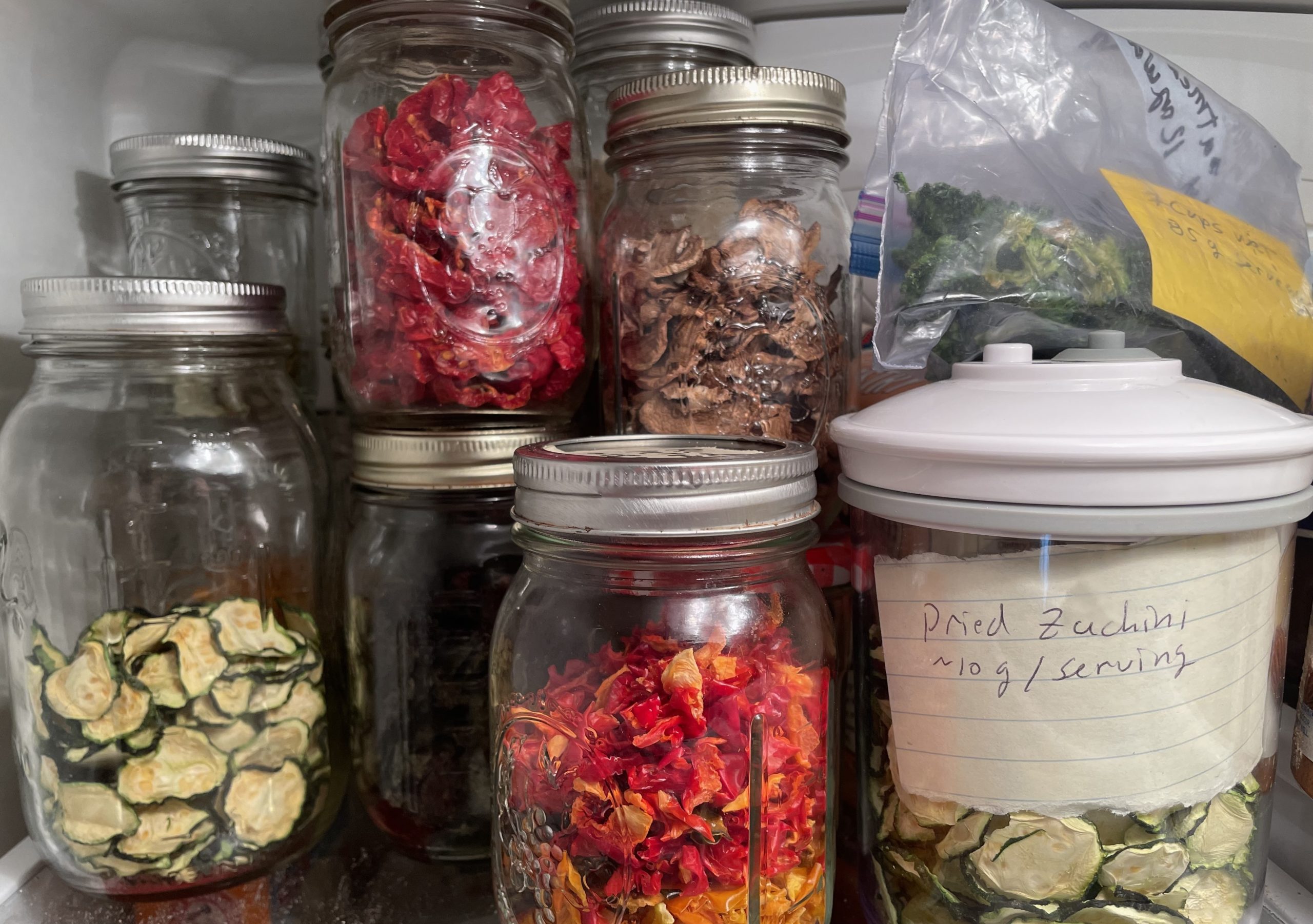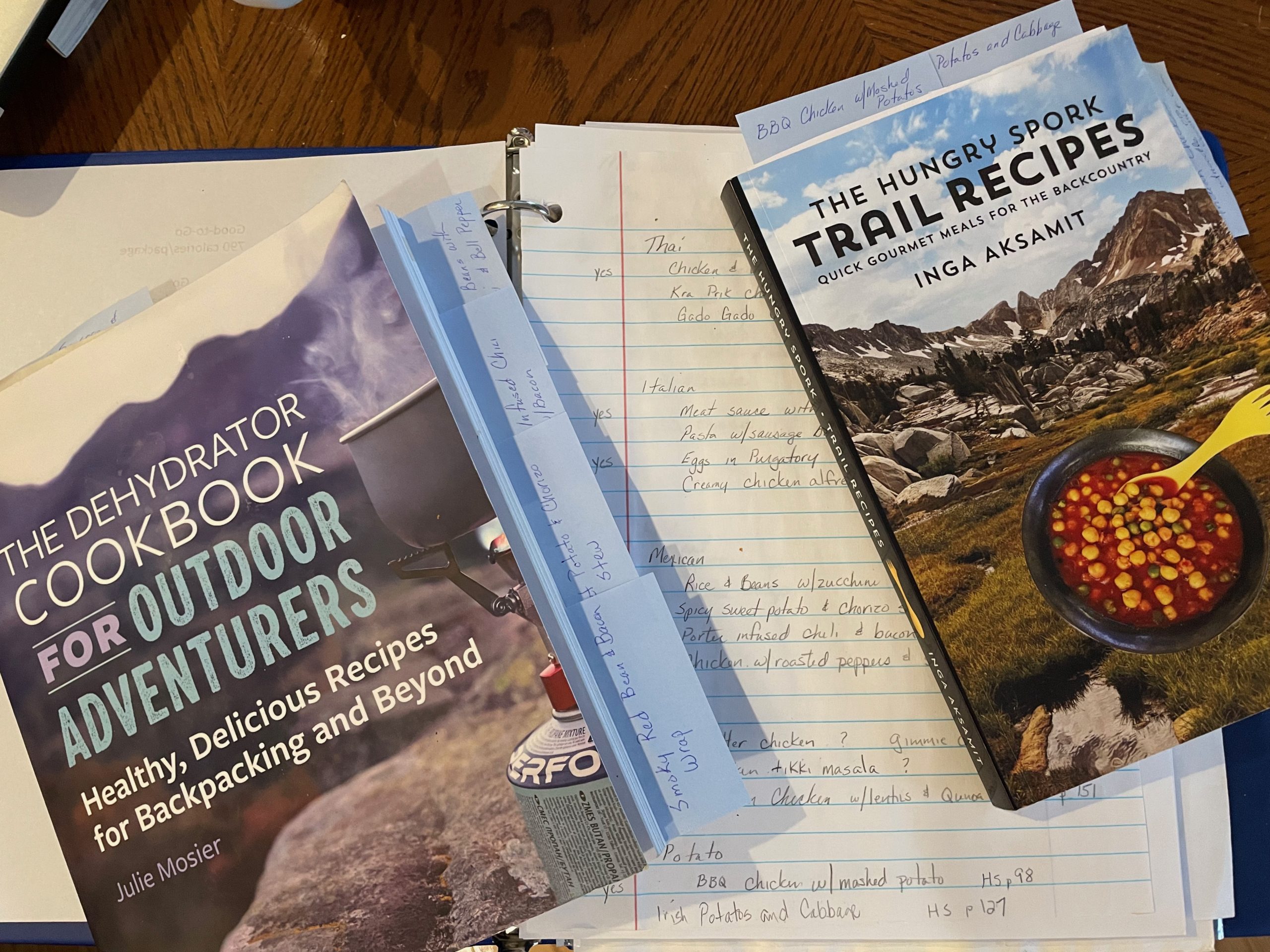Why We Are Preparing 200+ Meals for Our Thru-Hike
When I first started reading Appalachian Trail blogs and books, I was surprised that many people said not to mail yourself resupply boxes.
“You can easily resupply on the trail so don’t mess with mailings,” they said.
“You might not like your prepared food after you’ve been hiking for a while,” they said.
“Don’t bother carrying a stove.”
I even heard a story of a hiker who ate only Snickers bars on his entire thru-hike.
Right now, we are deep into preparing and dehydrating over 200 meals for our AT thru-hike. Why are we making our own food when it’s easy to resupply on the trail? Simply put, we really enjoy our own home cooking. Oops, scratch that. We really enjoy Chris’s home cooking. We hope to exit the trail at least as healthy as when we started, and, since we’re older hikers, we can’t do that on a diet of ramen and Poptarts. And since I’m sensitive to salt, many packaged side dishes (a hiker mainstay) just won’t work for us.
It’s important to note that as oldsters, we have the financial resources and the time to carry out this plan. We recognize this privilege and know that younger hikers, students, hikers with caregiving duties, and all those on a tight budget need to do what works for them. In my younger days, a diet of ramen, Oreos, and mac & cheese would sound heavenly! At age 65, I definitely have different needs.
Our meal plan is based on a simple formula — sauce + carbohydrate + protein + veggies. The sauces are loosely modeled after foods Chris cooks often and we love, such as Italian marinara, Thai curry, and Mexican salsa verde. Carbohydrates could be rice, couscous, noodles, or pasta. Protein might include chicken, beans, or soy curds. Broccoli, bell peppers, carrots, and mixed vegetables add color and vitamins.
Purchased powdered coconut milk, butter, milk, peanut butter as well as single-serving oil packets, siracha, and chili sauce are important additives. Mashed potato flakes and various nuts and seeds also add calories and flavor.
Some of our home favorites can be dehydrated with just a little tweaking. We’ve successfully dried and test-rehydrated kra prik chicken with kaffir lime leaves, pasta with meat sauce, and the base for eggs-in-purgatory.
Whole meal recipes from The Hungry Spork by Inga Aksamit and The Dehydrator Cookbook for Outdoor Adventurers by Julie Mosier provide variety and more complex flavors. Each week we’ll also eat a variety of purchased freeze-dried meals that we’ve taste-tested on our shakedown hikes. Of course, we’ll pig-out on zero days in town as well as stocking up on lunch foods such as tuna and chicken packets.
If for whatever reason we need to leave the trail without finishing, well, we’ll have a freezer-full of tasty meals that just need some boiling water to make a quick dinner. Or we’ll simply use them up on section hikes and shorter overnight trips. Although it’s a lot of work, I know we’ll appreciate the effort as we sit on a mountaintop eating our homemade chicken with roasted peppers and salsa verde. Yum!
This website contains affiliate links, which means The Trek may receive a percentage of any product or service you purchase using the links in the articles or advertisements. The buyer pays the same price as they would otherwise, and your purchase helps to support The Trek's ongoing goal to serve you quality backpacking advice and information. Thanks for your support!
To learn more, please visit the About This Site page.

 ">
">





Comments 10
Yes! I too provided all my own dehydrated meals and snacks for my 4-section hike of the AT. My first three years, I ate paleo, but with a strong emphasis on veggies and fruit. My final year (2021), I had made the switch to whole food plant based, free of added sugar, oil, and salt, due to high cholesterol and a family history of heart disease. It all worked out great. I didn’t miss others’ constant meals of Knorr sides and ramen, as I ate my sweet potato chili, curried veggies and lentils, self-made, dried hummus, and lots more. Your body and mind will thank you!
One other resource you might check out is the backpackingchef.com. His website and both cookbooks are exceptional.
PS: I might add that I will reach age 70 in December, and I still have a long list of trails to enjoy. Keep on keepin’ on, friends!
Oh, I love sweet potato chili! Thinking of making some today and sticking it the dehydrator! I’ve looked at Chef Glenn’s recipes but haven’t gotten his cookbook. Inga & Julie both have great recipes for us, though we typically need to triple Inga’s spices. Way to go at 70 — I have a feeling that more oldsters will finish while the young ones burn themselves out. Thanks for commenting.
Looking forward to following you guys, I will be 65 in two years and plan on retiring at that time.The AT is first on my bucket list!!
Fun. We’re preparing 100 dehydrated meals for my husband’s SOBO PCT (start date July 8). He’s approaching 60 and we are dehydrating his meals somewhat for nutrition, but also because food is love and this way I can send my love on the tail with him. We are dehydrating two “complete” homemade meals (chili and curried lentils), and then we made our own recipes for 8 other meals where we dehydrate the individual ingredients and combine. The recipe testing has been fun. I highly recommend chili rellenos. Those dehydrated poblano chilis smell and taste SO good. We just put together the shopping list for how much fresh stuff we need to dehydrate for all 100 meals and it’s awesome (8lbs of poblano chilis, 9lbs linguine noodles + 2 lbs of elbow macaroni, 15lbs of potatoes, etc.). We are meat eaters, so there’s also 15lbs of ground beef and 12lbs of ground chicken with 14 cups of breadcrumbs.
The hardest info to find is the yield of fresh to dehydrated, especially in lbs and ounces. So if we need 12oz of dried mushrooms or 21oz of dried peas for the 100 dinners, how many fresh mushrooms and frozen peas do we need to buy? We have been doing a lot of math and have a great excel spreadsheet, but some of it is trial and error for sure.
Enjoy the test of your dehydrating!
Please share your recipe for chile rellenos!
We’re total foodies (even used to write restaurant reviews) and we definitely agree that food = love. We’ve dehydrated mushrooms but found that the dried shiitake mushrooms from the Chinese grocery work great. Also found that you can buy frozen vegies and plop them in the dehydrator without any other prep. Saves a ton of slicing and chopping and you can often get them on sale.
Also consider Bob’s Red Mill Potato Flakes. I was surprised at how good they tasted!
Google can help you with the fresh to dehydrated yield. A quick search found this, though there are probably better ones out there http://www.plannedpantry.com/uploads/9/9/4/0/9940131/conversion_chart_-_bg.pdf
Final tip — get a food scale and convert your recipes to weight instead of volume. It’s so much easier when packing multiples of the same meal.
Thanks for your comment and good luck to your husband on the trail!
Both AT thru-hikes I did 99% mail drop resupply…and if I was to thru-hike the AT again, I’d do the same for the 3rd time. My dinner menu had about 30 items, all nutritionally balanced, and I never got board of them, as I only eat them once a month (one of those “reasons” people say not to mail drop: you’ll get board of the food you ship… funnily, this same people pretty much just eat mashed potatoes, ramen, and Knorr sides for every dinner!). They also talk about cost, yet my per day cost, with shipping was $4.75 on my second thru-hike…again with tasty meals, along the trail what you’d get for $4.75 a day would be crap, crap, and more crap. While early on the trail, the prices were OK, once you get north, I saw places, regularly, charging $3 for a Knorr or a mashed potatoes!
Yes! We’ve got about 20 meals in our rotation with a few extras that we’ll have a couple times, mostly because preparing and dehydrating those is more complicated. Chris expressed concern that we’ll get enough calories with some of them so we’re adding olive oil or coconut oil plus nuts and seeds.
Is there any wisdom that you can pass along? We’re considering purchasing freeze-dried chicken – so far we’ve been dehydrating canned chicken from Costco and it’s meh. Not sure that freeze dried would be any better though.
Oh – thank you for the google link for the conversion.